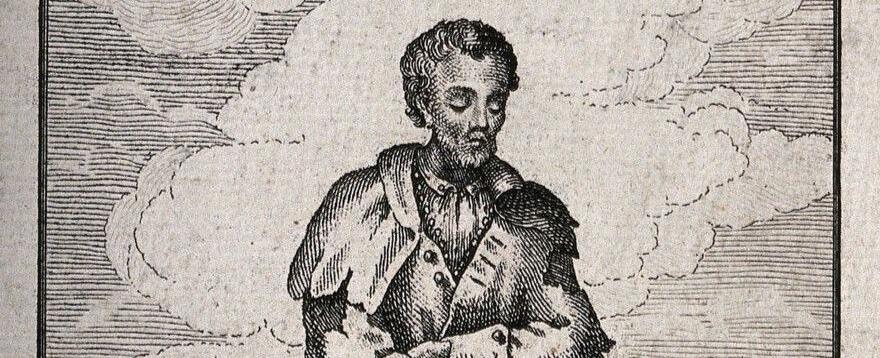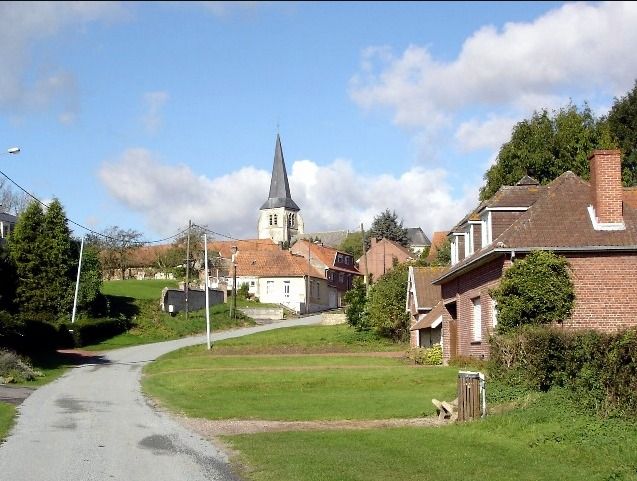
On April 16, we venerate the memory of St. Benedict Joseph Labre (1748-1783), a Secular Franciscan who chose the life of a penitent pilgrim, ending his days as a "street person."
Benedict was born in the village of Amettes in the Artois region of northern France. He was the eldest of 15 children of a prosperous shopkeeper. When he was about twelve, he went to live with his uncle, a parish priest in another town, to continue his education and so prepare to enter the seminary. He read the Bible and lives of the saints, and began dreaming of entering a strict religious order. When Benedict was about 18, an epidemic hit the area, and his uncle died.

Village of Amettes, birthplace of Benedict Joseph Labre
Benedict then set out to join the famous reform abbey of La Trappe, but was turned down because of his age and delicate health. He then tried the Carthusians and another Cistercian monastery for brief periods but as he often suffered from depression, he was rejected by both as unsuitable for community life.
Benedict had travelled on foot to these monasteries, so now, about 1770, he decided he would remain a penitent pilgrim, like the medieval lay Franciscan Roch of Montpellier, living in the world, but not of it, wandering homeless with no possessions. He was very similar to the “Holy Fools” so venerated in the Eastern Christian tradition.
Benedict travelled first to Rome, and then over the years visited most of the popular pilgrimage sites, including Assisi, Bari, Loreto, Compostela, Paray-le-Monial, and Einsiedeln. He relied on what people spontaneously offered him, giving away monetary gifts to people he felt needed it more. He often incurred abuse because of his filthy, ragged appearance.
After 1774, he pretty much remained in Rome, except for an annual pilgrimage to Loreto. He slept in the ruins of the Colosseum, and spent his days visiting churches, especially those where the Forty Hours Devotion was being held. People would see him there, immersed in prayer, and so he became a familiar figure in the city. During Holy Week of 1783 he collapsed of malnutrition after attending Mass at his favorite church, Santa Maria ai Monti, near the Colosseum, and taken to a friendly butcher’s house where he died the next day.

Church of Santa Maria ai Monti, Rome, where Benedict Joseph Labre spent much of his time
Popular devotion to Benedict immediately sprang up among the Roman people, fostered by a moving biography by his confessor, that revealed the depth of his spirituality and the many miracles attributed to his intercession. Benedict was beatified in 1860 and canonized in 1883 and is venerated today as the patron of homeless people, especially those with mental health struggles.

Tomb of Benedict Joseph Labre, Church of Santa Maria ai Monti, Rome
Cover image: Detail of contemporary etching of Saint Benedict Joseph Labre, Wellcome Collection
Dominic V. Monti, OFM, is a Franciscan Friar of Holy Name Province (USA) and currently professor of Franciscan Research in the Franciscan Institute of St. Bonaventure University. He devoted the greater part of his ministry to teaching the History of Christianity, in particular the history of the Franciscan movement. He has contributed two volumes to the Works of St. Bonaventure series and is author of Francis & His Brothers, a popular history of the Friars Minor.